All of the shogi pieces have the same color. It is the direction of the piece that shows you, which player does the piece belong to. Take a look:
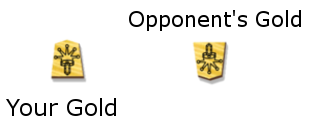
Most of the pieces cannot jump over other pieces and they can move only onto free squares.
But if their final square is occupied by opponent piece, you can take it!
Here is an example:
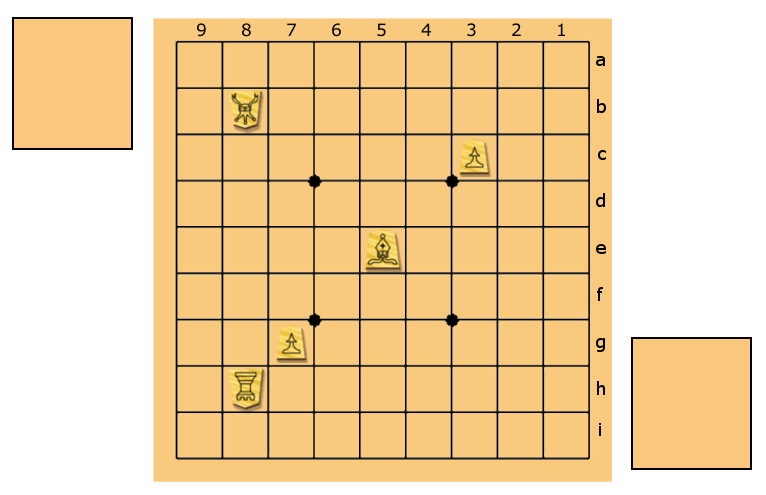
What can you do with the bishop:
- The bishop cannot move on and beyond 3c square (3rd column, c row, see coordinates on the board), because there is our pawn on the way.
- The bishop could take the silver on 8b, because it moves on that square normally landing on the opponent piece.
- The bishop cannot take the 8h rook, because there is pawn on 7f in the way. The bishop cannot land on the 7f file for the same reason.
- The bishop can move freely up to the 1i square.
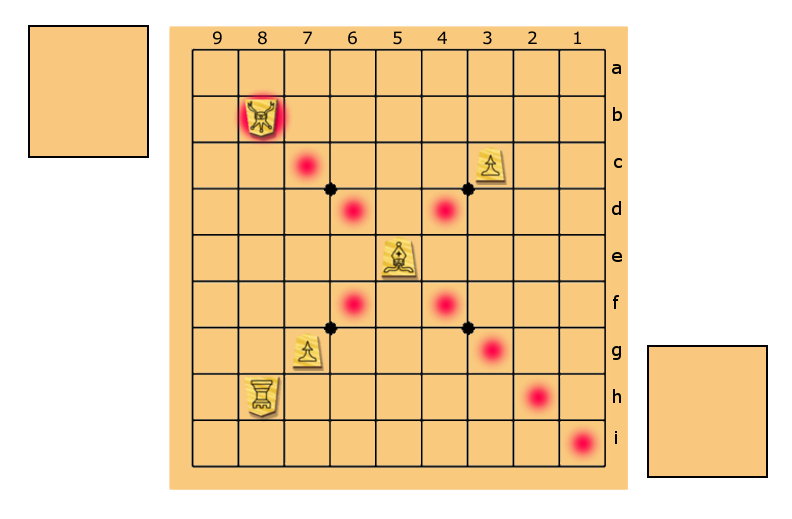
After you take a piece, put it off the board on your right side (you can put it on your piece stand). Look at the animation showing that action:
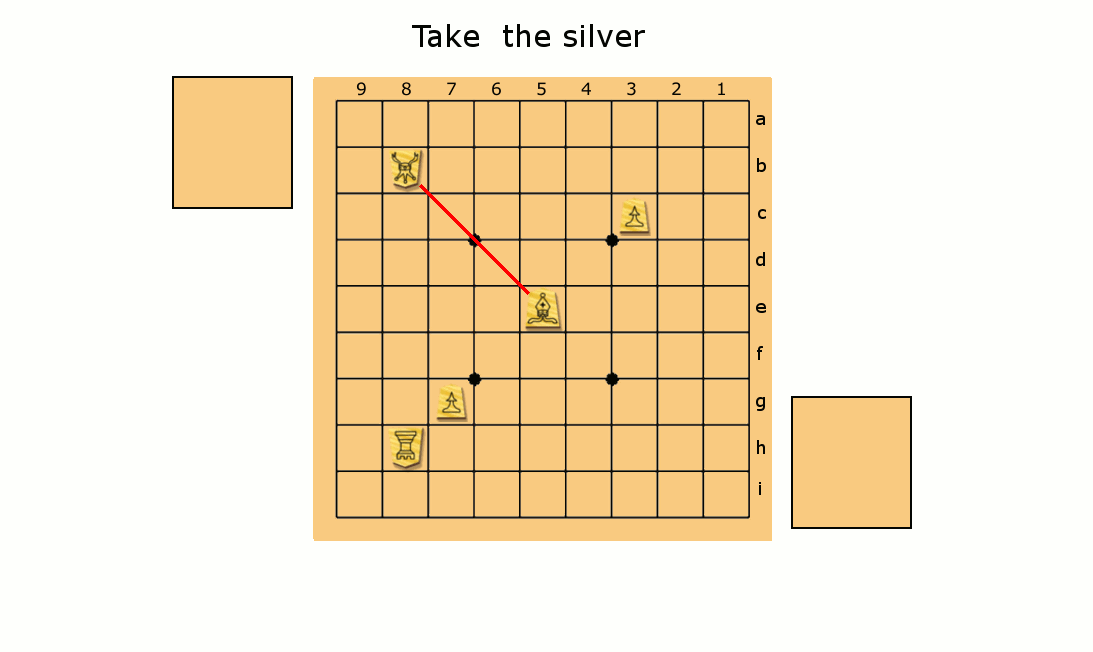
The position where king is being threatened to be taken is called a check. If you ignore a check, in the next move your king will be taken and you would lose the game.
In this position, opponent has ignored a check! Win the game in one move.
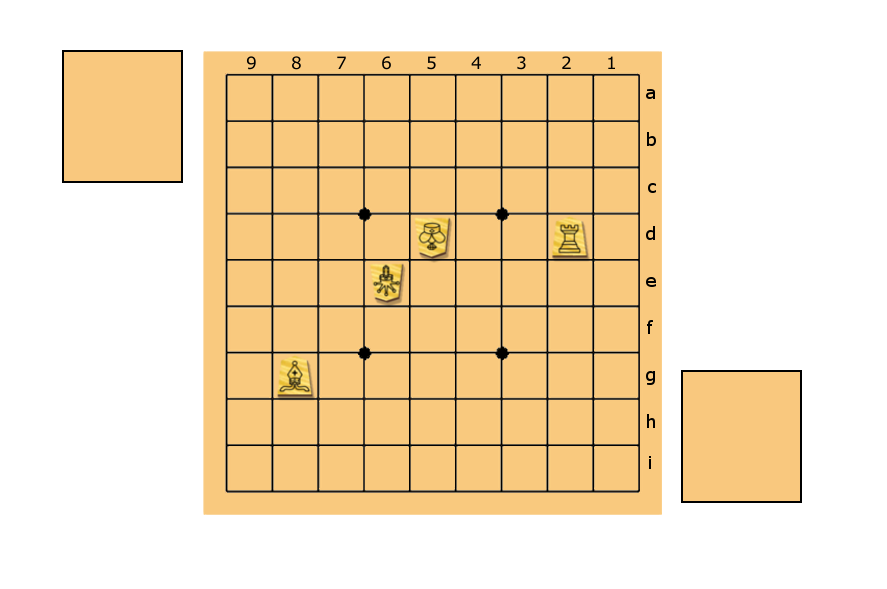
Answer: You can take the king only using the rook on 2d. The bishop on 8g is blocked by your opponent’s gold on 6e.
